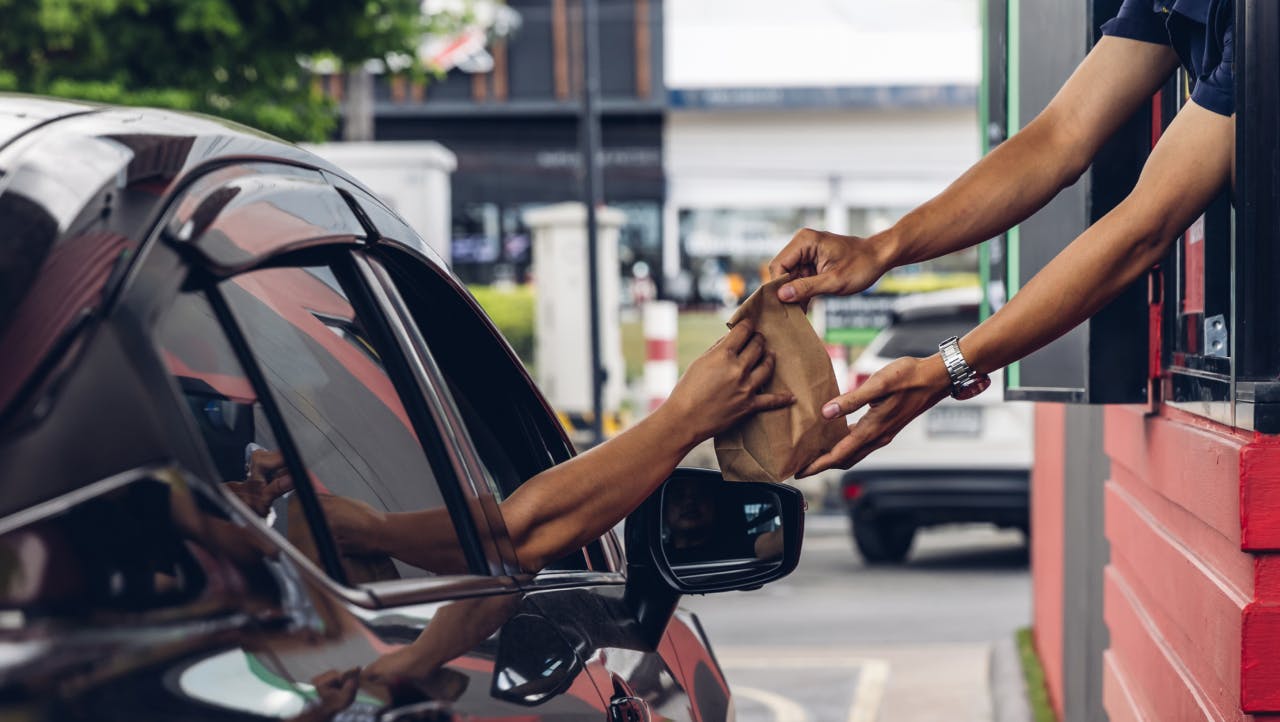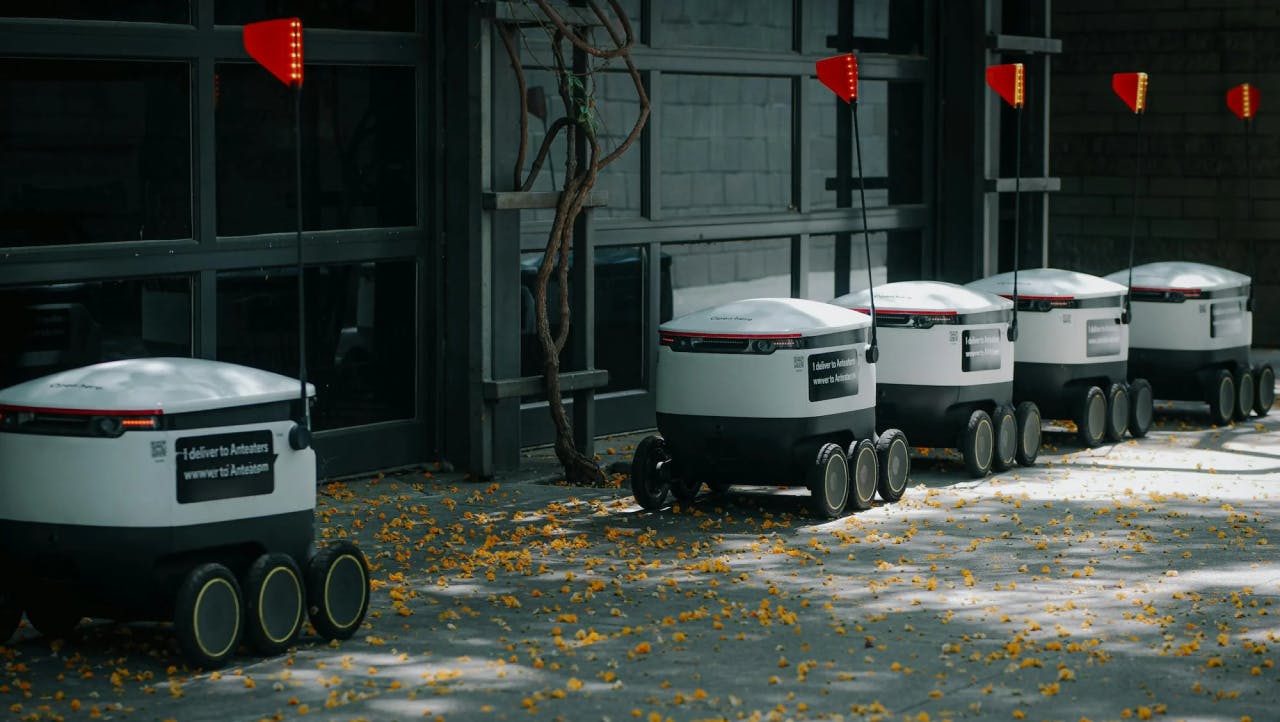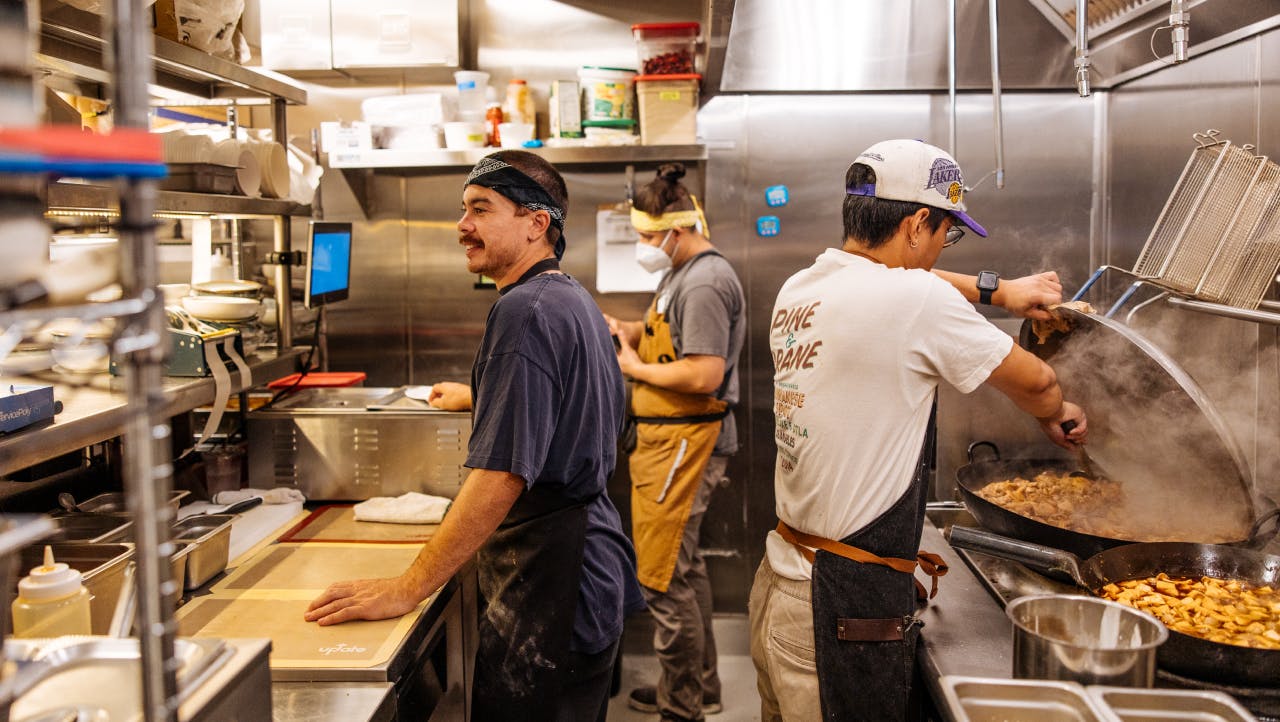
Table of contents
Have you heard? According to Global Newswire, the global QSR market is projected to surpass $384 billion by 2030, a substantial increase from its $257.19 billion valuation in 2019. This industry growth isn't related solely to the need for convenience anymore. Today's consumers are more particular. Fast-casual restaurant goers are demanding healthier options, sustainable practices, and technology-driven experiences that anticipate what they want before they even place an order.
For restaurant owners and operators, staying ahead of these rapidly evolving industry trends is all but essential for survival. The competitive landscape is transforming thanks to expanding urban populations, consumer lifestyle shifts, and digital ordering platforms becoming the norm rather than the exception.
If you’re unsure how to maintain your competitive edge in such a dynamic environment, you’re not alone. Now more than ever, it’s crucial to embrace automation, sustainability, and data-driven strategies. The experts at Otter are here to help you turn modern-day obstacles into opportunities, positioning your restaurant at the forefront of the incoming wave of growth. In this post, you’ll discover the challenges QSRs face today, actionable solutions to guide your success, and what to expect for the future.

Top 10 quick service restaurants trends
Let’s start with today’s most current trends. The quick service restaurant industry is evolving at breakneck speed, and staying ahead means embracing the latest inventions that drive efficiency, enhance customer experience, and boost profitability. From AI-powered drive-thrus to predictive analytics, these innovations are solving the most common problems fast food restaurant owners face. Incorporating even one of the trends from our list will help QSR owners and operators to future-proof their business and delight today’s fast-paced, tech-savvy consumers.
AI-powered drive-thrus and smart menus
- The Problem: Traditional drive-thrus create bottlenecks during rush hours, resulting in long wait times and frequent order errors. These inefficiencies frustrate customers and directly impact your revenue.
- The Solution: Modern drive-thrus now feature artificial intelligence-powered voice assistants, facial recognition technology, and dynamic digital menus that adjust based on real-time factors. These systems take orders more accurately and can personalize menu suggestions based on:
- Time of day
- Weather conditions
- Customer purchase history (for loyalty members)
- Major fast food chains like Wendy's have already implemented these AI-driven systems to streamline operations and significantly reduce delays.
- Actionable Takeaway: Implementing AI-powered ordering systems and smart dynamic menus will boost your service speed and substantially improve customer satisfaction. The technology pays for itself through increased order accuracy and higher throughput during peak hours.
Hyper-efficient kitchen automation for faster orders
- The Problem: Kitchen operations frequently become backed up during busy periods. Even well-trained staff struggle to maintain consistent quality while keeping up with peak demand.
- The Solution: Kitchen automation technologies are transforming back-of-house operations:
- Automated cooking equipment with precision timing
- Robotic kitchen assistants for repetitive tasks
- AI-driven food preparation systems that optimize workflow
- Let’s take Chipotle's newest team member, "Chippy" robot. Chippy has been designed to consistently prepare tortilla chips throughout the day, allowing staff to focus on more complex food preparation and quality control. Throughout the industry, these automation solutions are demonstrably reducing labor costs while improving order consistency.
- Actionable Takeaway: Adopt targeted kitchen automation solutions to meet demand spikes more effectively, lower labor expenses, and maintain consistent food quality. Start with your most time-consuming repetitive tasks to see immediate efficiency gains.
Next-level mobile ordering and instant pickup stations
- The Problem: Slow, manual ordering processes and lengthy queues limit customer throughput and create frustration. These inefficiencies reduce revenue potential during peak hours when every minute counts.
- The Solution: Fully integrated mobile ordering platforms paired with dedicated instant pickup stations allow customers to order ahead and bypass lines entirely. Leading QSR brands, notably those in the coffee shop sector like Starbucks, have successfully implemented mobile apps with dedicated pickup shelves, resulting in higher order volumes and dramatically faster service.
- Actionable Takeaway: Investing in a robust mobile-first ordering strategy, like Otter’s online ordering system, with dedicated pickup areas can significantly increase your revenue while improving customer convenience and satisfaction.

Book a demo with Otter
It’s time to enhance your operations with Otter’s all-in-one restaurant platform. Book time with our sales team to learn more.

Subscription-based loyalty programs to lock in customers
- The Problem: In today's competitive landscape with abundant dining options, QSRs struggle to drive repeat business and build genuine customer loyalty.
- The Solution: Membership-style loyalty programs that offer recurring value through discounts, free menu items, or unlimited benefits (like refills or delivery) encourage customers to return more frequently. These subscription models effectively boost engagement and increase average spend per visit. Brands like Panera Bread and Pret a Manger are implementing subscription-based rewards to differentiate themselves in the crowded QSR market.
- Actionable Takeaway: Launching a loyalty program can dramatically increase customer retention rates and foster stronger brand loyalty that withstands competitive pressures.
Speeding up delivery with AI dispatching and drone Drop-Offs
- The Problem: Traditional delivery methods are often inefficient, expensive, and heavily dependent on third-party platforms with high commission fees, negatively impacting both customer satisfaction and profit margins.
- The Solution: AI-powered dispatch systems optimize delivery routes and timing, while emerging drone delivery options promise to make order fulfillment faster and more cost-effective. Domino's has already implemented AI to assign deliveries for maximum efficiency, and pilot programs for autonomous drone deliveries are gaining traction in select markets.
- Actionable Takeaway: Investing in AI-driven delivery optimization and exploring autonomous delivery options can significantly reduce delivery costs while improving speed and reliability.
The rise of compact, delivery-first QSR formats
- The Problem: Traditional large QSR locations come with high overhead costs and are slow to adapt to the growing customer preference for dining-in alternatives.
- The Solution: Smaller footprint, digital-first, and drive-thru-only concepts maximize operational efficiency and scalability. These compact restaurant formats are specifically designed for quick pickup and delivery, enabling brands to expand rapidly while maintaining lower operating costs.
- Actionable Takeaway: Testing smaller, delivery-focused restaurant formats, such as ghost kitchens or virtual brands, can help your QSR scale more quickly while meeting evolving consumer preferences for convenience and speed.
Predictive analytics for real-time demand forecasting
- The Problem: Poor inventory management leads to significant food waste, stockouts during peak periods, and missed sales opportunities, directly impacting both profitability and customer satisfaction.
- The Solution: AI-powered predictive analytics tools forecast demand patterns in real-time, allowing QSRs to optimize inventory levels, staff scheduling, and food preparation. Restaurants using these advanced forecasting tools experience less waste and achieve better alignment between supply and customer demand throughout the day.
- Actionable Takeaway: Integrating AI-based forecasting tools and analytics into your operations can optimize inventory management. In addition, it can assist with staff scheduling and minimizing waste while maximizing profitability.
Global flavors and menu innovation
- The Problem: Today's consumers are increasingly seeking unique, adventurous, and globally inspired menu options, making traditional QSR menus feel stale and outdated in comparison.
- The Solution: Forward-thinking QSRs are introducing globally inspired dishes and fusion flavors to keep their menus fresh and attract new customer segments. For example, Taco Bell regularly experiments with international flavors and limited-time menu items to engage adventurous eaters and drive repeat visits. The renowned QSR uses well-placed social media campaigns to create buzz and garner attention with each new release.
- Actionable Takeaway: Regularly update your menu with global flavors and creative limited-time offerings. Even small QSRs can engage curious diners, benefiting from seasonal specials that incorporate international influences or unexpected flavor combinations.
Experiential and immersive dining
- The Problem: In today's social media-driven world, QSRs face a dual challenge: creating Instagram-worthy moments that drive online visibility while delivering real-world experiences compelling enough to draw customers off their phones and into their establishments.
- The Solution: Innovative brands are investing in experiential dining elements. Interactive kiosks, digital gamification, and immersive in-store environments are promising memorable visits that go beyond just the food. YO! Sushi in the UK has embraced this trend by using conveyor belts to deliver dishes directly to diners and introducing automated ordering kiosks and robotic servers, creating a modern, engaging experience that keeps customers coming back.
- Actionable Takeaway: Enhance your in-store experience with interactive technology or unique décor elements to differentiate your brand and boost customer engagement. Even small touches like digital menu boards or themed environments can create a more memorable dining experience that customers will share on social media.
Sustainability and zero-waste initiatives
- The Problem: Consumers and regulators are increasingly demanding more eco-friendly practices from restaurants, and waste management is becoming both a cost concern and a reputational risk for QSRs.
- The Solution: Leading QSRs are adopting comprehensive sustainability initiatives, including compostable packaging, local ingredient sourcing, expanded plant-based menu options, and zero-waste kitchen practices. Burger King, for example, has launched initiatives to use fully compostable packaging and source ingredients from local suppliers wherever possible.
- Actionable Takeaway: Implement visible sustainability initiatives to attract eco-conscious customers and future-proof your business against changing regulations. Start with one high-impact change, such as switching to sustainable packaging or implementing a food waste tracking system, and communicate these efforts to your customers.
These innovations are rapidly transforming the QSR landscape, helping operators deliver faster, smarter, and more personalized experiences while staying competitive in 2025.

Future-proofing: what to expect beyond 2025?
The QSR landscape of 2025 has already been transformed by breakthrough innovations. AI-powered drive-thrus have dramatically reduced wait times, robotic kitchen automation has revolutionized food preparation, subscription-based loyalty programs have redefined customer retention, compact delivery-first formats have reimagined physical spaces, and AI-driven delivery solutions have accelerated fulfillment.
But this is just the beginning. Looking ahead to 2026 and beyond, foodservice industry experts anticipate even more significant advancements:
- Fully automated restaurant operations with minimal human oversight
- AI-powered cashierless stores, similar to Amazon Go, but tailored specifically for quick service
- Blockchain-enhanced food traceability systems that provide complete supply chain transparency
- Advanced robotics handling increasingly complex food preparation tasks
- Comprehensive IoT integration connecting every aspect of restaurant operations
- Improvement of hyper-personalized dining experiences driven by predictive customer analytics
- Evolution of cloud kitchens and virtual brands into mainstream business models
The reality is clear: technological acceleration in the QSR industry shows no signs of slowing. Restaurants that strategically invest in these innovations today will build the foundation needed to thrive tomorrow.
Otter stands ready as your comprehensive technology partner in this transformation journey. Our integrated platform offers the solutions QSR businesses need to future-proof their operations, from streamlined ordering and delivery management to powerful analytics and loyalty programs. By partnering with Otter, you'll be positioned to adapt quickly as emerging technologies reshape customer expectations and competitive dynamics in the years ahead.
The future of QSR belongs to the technologically bold. Will your restaurant be among them?
FAQs
How is AI transforming the quick service restaurant industry?
AI is streamlining operations by improving ordering accuracy, powering predictive analytics, and automating kitchen tasks, resulting in greater efficiency and lower costs for QSRs. Integrated AI tools also help unify ordering platforms and reduce operational friction, making it easier for staff to manage daily tasks.
What role does sustainability play in QSR trends?
Sustainability is a top priority, with consumers expecting eco-friendly packaging, local sourcing, and waste reduction initiatives. Restaurants are under increasing pressure to reduce their carbon footprint and adopt environmentally responsible practices to attract and retain customers.
How does Otter’s AI help QSRs improve customer engagement?
Otter’s AI analyzes customer behavior to personalize marketing, optimize delivery app promotions, and tailor menu offerings, helping QSRs reach new customers and maximize resources.
Is Otter POS suitable for multi-location franchises?
Yes, Otter POS is one of the best POS systems for both independent QSRs and large franchises. Our all-in-one system allows for order aggregation and quick updates to menus and pricing across all locations, making it a scalable solution for multi-location businesses.
What are the biggest challenges facing QSRs in 2025?
QSRs face ongoing challenges such as supply chain disruptions, labor shortages, and rising costs for food and utilities due to inflation. Success depends on strong risk management, investment in automation, and adapting quickly to shifting consumer preferences.
How important is digital ordering and delivery in today’s QSR landscape?
Digital ordering and delivery are now essential, with around 30% of restaurant revenue coming from online and delivery orders. Mobile-first strategies, instant pickup, and partnerships with delivery platforms are critical for meeting consumer demand and driving growth.

Book a demo with Otter
It’s time to enhance your operations with Otter’s all-in-one restaurant platform. Book time with our sales team to learn more.

Book a demo to see how Otter’s all-in-one platform can help your restaurant thrive.